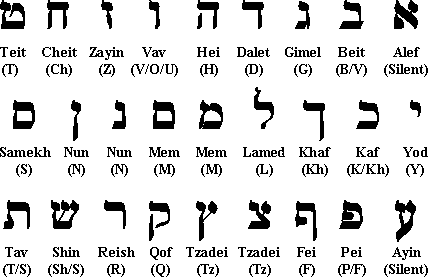The rhythm of Hebrew poetry is irregular and is based on the accented or toned syllables rather than on meter as in English. Rhymed word sounds are rare. Refrains, repeated lines, sometimes occur. The "rhyming" in ancient Hebrew poetry is based on parallelism of ideas in three forms: synonymous (the meanings of the lines are similar); antithetical (the meanings of the lines are opposites of one another; and synthetic (nouns correspond to nouns, verbs correspond to verbs, etc)
One convention of ancient Hebrew poetry which has received much modern attention is the acrostic, in which the first letter of each line spells out a word or makes a pattern. Psalm 119 is such an acrostic. Verses 1-8 begin with the letter aleph, verses 9-16 begin with the letter beth, verses 17-24 begin with the letter gimel, then daleth, he, waw, zayin, etc. Acrostic patterns also occur in Psalms 9, 10, 25, 34,37, 111, 112, and 145.
All of these poetic conventions are human in origin and have nothing to do with the supposed Bible Codes which some believe that God has embedded into the Torah.




No comments:
Post a Comment